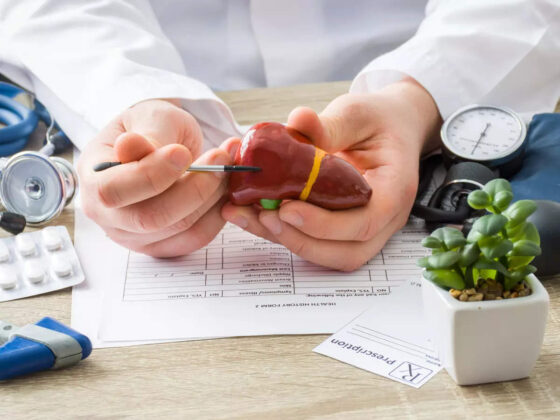With everyday spike in cases across the country and the world, already there is a requirement for a new normal, with change in perspectives in every field, industry and individual.
Cities that are densely populated are the most affected, with Mumbai having the maximum cases in comparison to other cities. The main reason is its densely populated settlements which have been a thriving ground for the spread of corona virus. In order to fight the Pandemic in densely populated urban settlements, Health Ministry lists down the focus areas to be addressed in order to fight COVID-19 in these settlements.
What are these settlements and how are they crucial in the fight against COVID-19?
They are mostly informal settlements within cities that may have mushroomed due to rural-urban migration, with inadequate housing and poor living conditions, poor structural quality of housing, inadequate access to safe water, insecure residential status and poor sanitation. One can witness these areas suffer from gaps in health and healthcare services.
Hence physical distancing, isolation, quarantine, surveillance, and communicating risk to the dwellers could be challenging in such areas.
How to implement containment plans in these areas
Urban Local Bodies (Municipal Corporations or Municipalities) should plan for preparedness and response to COVID-19, considering the challenges unique to such populations. Health Ministry states that an Incident Response System would be set up.
An Incident Commander of appropriate seniority is to be identified who will be reporting to the Municipal Commissioner. Incident Commander will identify the area’s planning, operation, logistics and finance teams, so as to implement the measures to respond to a COVID outbreak.
A coordination mechanism will be evolved under the leadership of Incident Commander and will comprise of representatives from Health, Women & Child Development, Integrated Child Development Services, Housing & Urban Affairs, Public Health Engineering Wing, Swachh Bharat Mission, elected representatives, prominent NGOs already serving the area, community leaders, etc.
He/she will daily review the implementation of containment plans in the settlements. All information will be shared on a daily basis with the District and State Control rooms, which will provide necessary guidance to the teams at field level.
Surveillance:
The surveillance system shall be strengthened for surveillance and contact tracing mechanism.
The District Integrated Disease Surveillance Project IDSP unit can map field workers/ health workers who can be used for surveillance – in the health posts/dispensaries, ANMs, ASHAs, Anganwadi Workers, Municipal health staff, sanitation staff and other volunteers (NSS/NYK/IRCS/NCC and NGOs) etc. The trained manpower available on www.covidwarriors.gov.in can also be tapped if necessary.
The plan will clearly delineate the allocation of households for the surveillance staff for house to house survey for case detection & contact tracing, coordinating sample collection, case management, data collection and reporting. The existing routine surveillance would be strengthened through dispensaries/health posts/urban health centres and private health facilities for ILI/SARI surveillance.
Training of the surveillance team:
Orientation training will be organized by the Chief Medical Officer/Executive Health Officer to train the surveillance workers. Their trainings will focus on surveillance, contact tracing, home quarantine, IPC, managing quarantine and isolation centres, supply of ration to homes etc.
Identifying COVID Care Centres / Quarantine facility in a nearby area:
The next issue is availability of community level structures in these areas, that can be transformed into designated COVID Care Centres / Quarantine areas. The urban local body shall be assigned with identifying existing facilities near to these settlements which shall be earmarked as COVID Care Centres/Hospitals. The civil dispensaries, health posts, health & family welfare centres and private health facilities within these settlements will act as nodal points for the wards/sub-wards/zones for detecting and reporting ILI/SARI cases through their OPDs. Such facilities will also be used as depot holder for Hydroxychloroquine, masks, household disinfectants etc. In order to avoid crowding in hospitals or health centres, non-COVID services especially immunization, management of communicable and non-communicable diseases, maternal and child health services should continue to be provided in these areas.
Similarly Quarantine facility (school, stadium, etc.) in a nearby area also need to be identified. Shifting of high-risk contacts (elderly and those with co-morbid conditions) is a crucial intervention to minimize the spread of disease in such persons, thereby limiting morbidity and mortality among them. The high-risk population can be shifted to institutional quarantine so as to have focused management of such cases as it may have an impact on mortality.
Ambulances need to be stationed at the perimeter of these localities.
What are the behaviour changes need to be addressed?
|
Challenges:
- Physical distancing will be a major challenge at such places. However, it should be promoted at all formal and informal gatherings, particularly in community water points, public toilets, PDS distribution points, health centres etc. While sleeping, the distancing can be achieved to an extent by sleeping in opposite direction i.e. head end of one person faces the leg of the other
- Community cleaning and disinfection drive needs to be undertaken on daily basis.
- Adequate arrangement for soaps/disinfectants should be ensured at the health & family welfare centres
- Face covers should be made mandatory. It can be manufactured locally within the area as self-help group activity or through NGOs.
Communication:
Community participation is very crucial to overcome this pandemic. Hence measures should be taken to create awareness on:
- Common signs and symptoms of COVID-19
- High risk population particularly elderlies
- Risk involved for persons with co-morbidities like hypertension, cardiovascular diseases, renal disease etc
- Helpline/Toll free numbers should be widely publicized for reporting cases.
How to communicate?
- Need to address psycho-social issues and spread stigma removal messages particularly in local languages
- Psycho-social teams should be deployed to the area to address mental health needs
- Posters should be put up outside in the community area, toilets, water points
- Local cable TV channels may be utilized to create community awareness
- Social media should be used to target this population and for refuting fake news
Community groups should also popularize adoption of Aarogya Setu application.











